21.5-inch iMac (Late 2013) Review: Iris Pro Driving an Accurate Display
by Anand Lal Shimpi on October 7, 2013 3:28 AM ESTThe Display
When it was first announced, I shrugged off the 21.5-inch iMac model. At the time I was using a 27-inch Thunderbolt Display and couldn’t see myself using anything smaller, or lower resolution. With the new 27-inch iMac looking a lot like last year’s model with evolutionary upgrades on the internals, I was obviously drawn to the new 21.5-inch system because of its use of Intel’s Iris Pro 5200 graphics so I ended up with the first < 3MP desktop display I’d used since the release of the first 30-inch 2560 x 1600 panels years ago.
Given how much time I spend on notebook displays these days, now was as good a time as any to go back to a 1080p desktop display. While I’d prefer something with an insanely higher resolution, it’s still too early for a 21.5-inch 4K panel (or a 27-inch 5K panel), which Apple would likely move to in order to bring Retina displays to its desktops.
There are two reasons why you’d opt for the 21.5-inch iMac vs. the larger one: cost and size. At a bare minimum you’re looking at a $500 price difference between the 21.5 and 27-inch iMacs, which is pretty substantial to begin with. The size argument is just as easy to understand. The 27-inch iMac occupies a considerable amount of space on my desk, and I’ve come to realize that not everyone likes to be surrounded by a sea of desks. Either way there’s clearly a market for a computer this size, with this sort of a resolution. So how does the display fare?
In short: it’s nearly perfect.
Brian and I were comparing notes on the two reviews we’re working on at the same time. He sent me some CIE diagrams showing me color accuracy for the displays he’s testing, I responded with this:
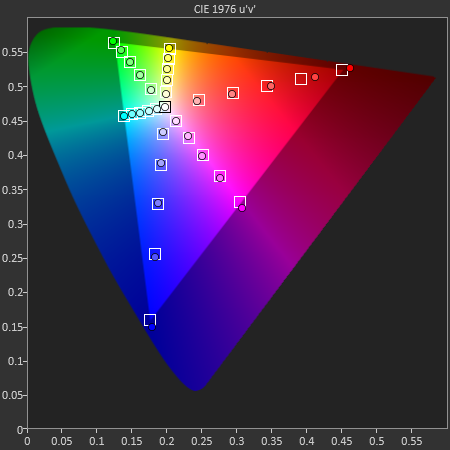
21.5-inch iMac (Late 2013) Saturations
Those boxes show what’s expected, the circles inside of them show what’s delivered by the display. The 21.5-inch iMac is spot on, out of the box, without any calibration required. Brian’s response:
WOW
is that out of the box?
The iMac’s display does extremely well in all of our tests, always turning in a delta E of less than 2. It’s just incredible. I'm borrowing the graphs below from our tablet bench data, but I've tossed in the 2013 MacBook Air as a reference point.
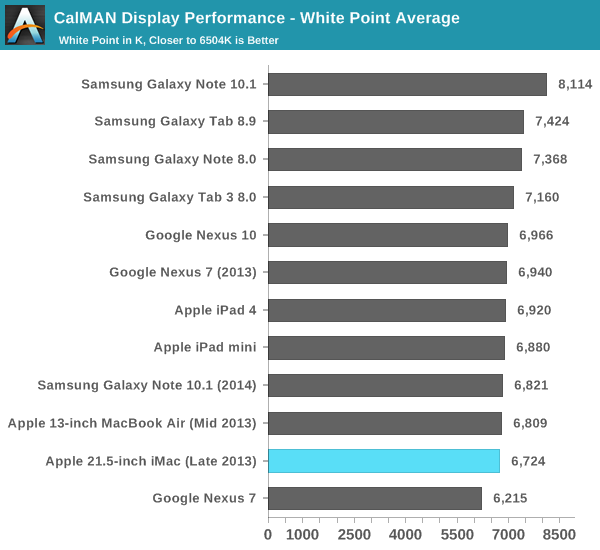
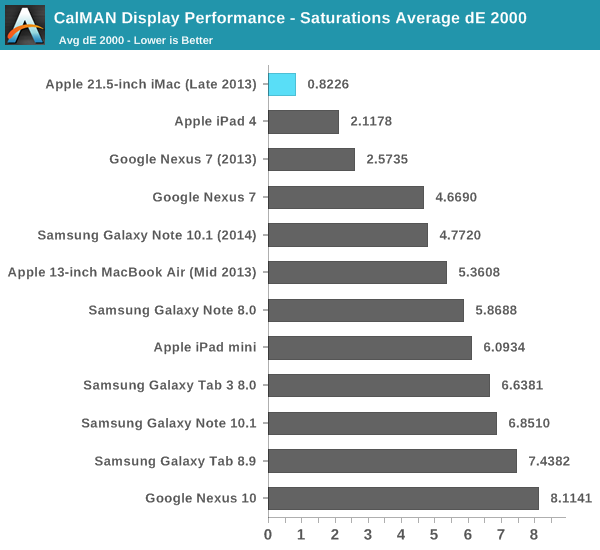
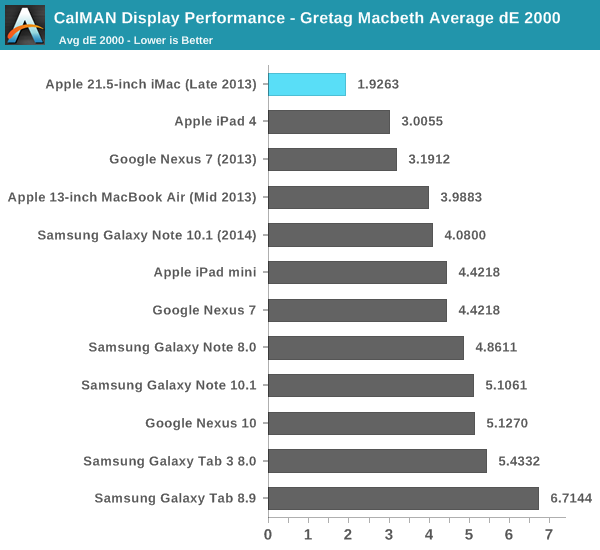
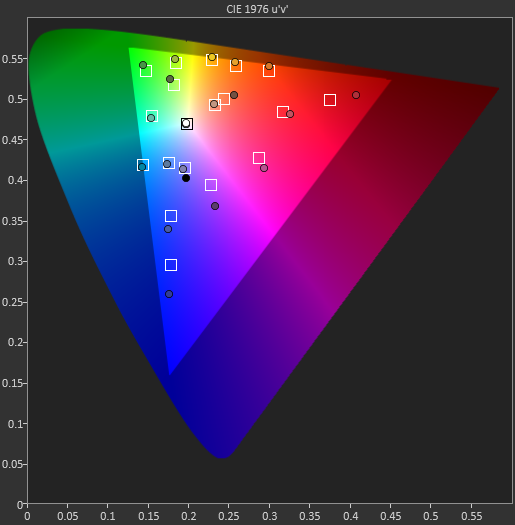
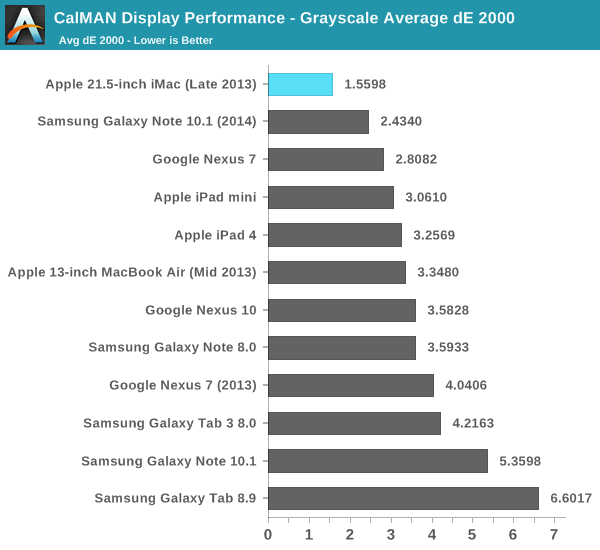
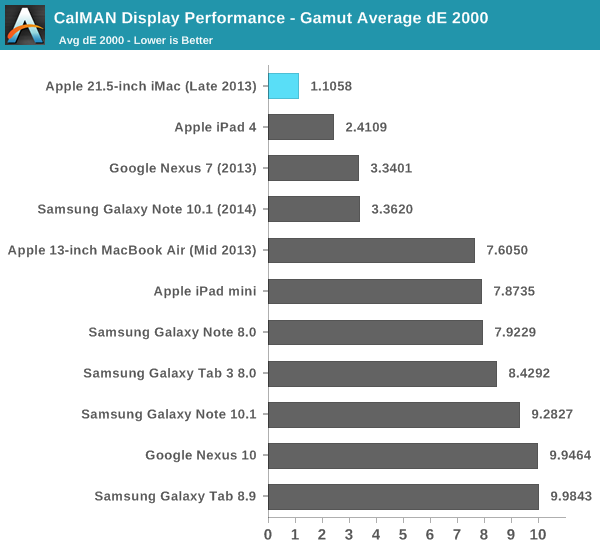
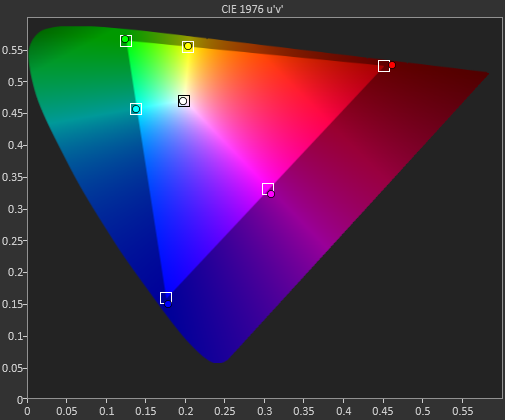
Although I doubt Apple’s intended audience for the entry-level 21.5-inch iMac are imaging professionals, they could very well use the system and be perfectly happy with it. Literally all that’s missing is a 2x resolution model, but my guess is it’ll be another year before we see that.
I have to point out that Apple does source its display panels from multiple providers (typically 2 or 3), not to mention panel variance within a lot. I don’t anticipate finding many panels better than the one in my review sample, but it’s always possible that there will be worse examples in the market. I haven’t seen huge variance in color accuracy from Apple panels, so I think it’s a pretty safe bet that what you’re going to get with any new iMac is going to be awesome.



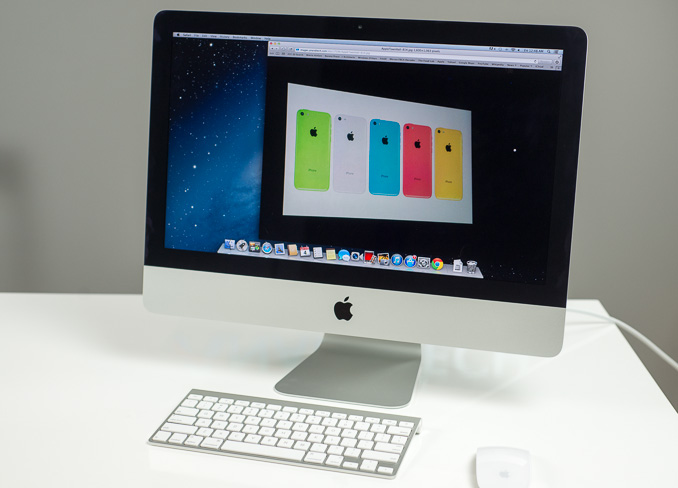











127 Comments
View All Comments
g1011999 - Monday, October 7, 2013 - link
Finally. I check anandtech several times recently for Iris Pro based iMac 21" review.malcolmcraft - Thursday, October 9, 2014 - link
It's nice, I agree. But for a full-size work station I'd not recommend Mac. /Malcolm from http://www.consumertop.com/best-desktop-guide/Shivansps - Monday, October 7, 2013 - link
I suspecting that the big loss in performance on high details compared to 750M may be related to L4 eDRAM running short than driver issue, as AA, Intel never had good performance with filters, they support hardware x2 AA yet?tipoo - Monday, October 7, 2013 - link
Yeah, doesn't AA hammer bandwidth? The eDRAM helps performance, but it's still quite low compared to what the other cards are paired with, even in best case scenarios.IntelUser2000 - Tuesday, November 12, 2013 - link
I don't think its just that. Compared to the competition like the Trinity's iGPU and the GT 650M, the texture fill rate is rather low. That impacts performance not only in texture bound scenarios with settings cranked up but anti-aliasing as well. The fillrate of the top of the line Iris Pro 5200 is about equal to Trinity while the version in the iMac would fall short. The GT 650M is 40% better than the top of the line Iris Pro and over 55% better than iMac version.There's also something to be desired about Intel's AA implementation. Hopefully Broadwell improves on this.
IanCutress - Monday, October 7, 2013 - link
Interestingly we see Crystalwell not have any effect on CPU benchmarks, although we can probe latency as seen before.willis936 - Monday, October 7, 2013 - link
This seems counter intuitive. It's acting as a CPU+GPU shared cache correct? Intel architectures are relatively cache bandwidth starved and you'd think that 128MB of L4 would help keep the lower levels filled.Flunk - Monday, October 7, 2013 - link
Perhaps it means that the assumption that Intel architectures are relatively cache bandwidth starved is faulty.name99 - Monday, October 7, 2013 - link
Or that the working set of most benchmarks (if not most apps) is captured with a 4 or 6MB cache?Caching's basically irrelevant for data that is streamed through.
tipoo - Thursday, October 10, 2013 - link
The L4 is pretty low bandwidth for a cache though.